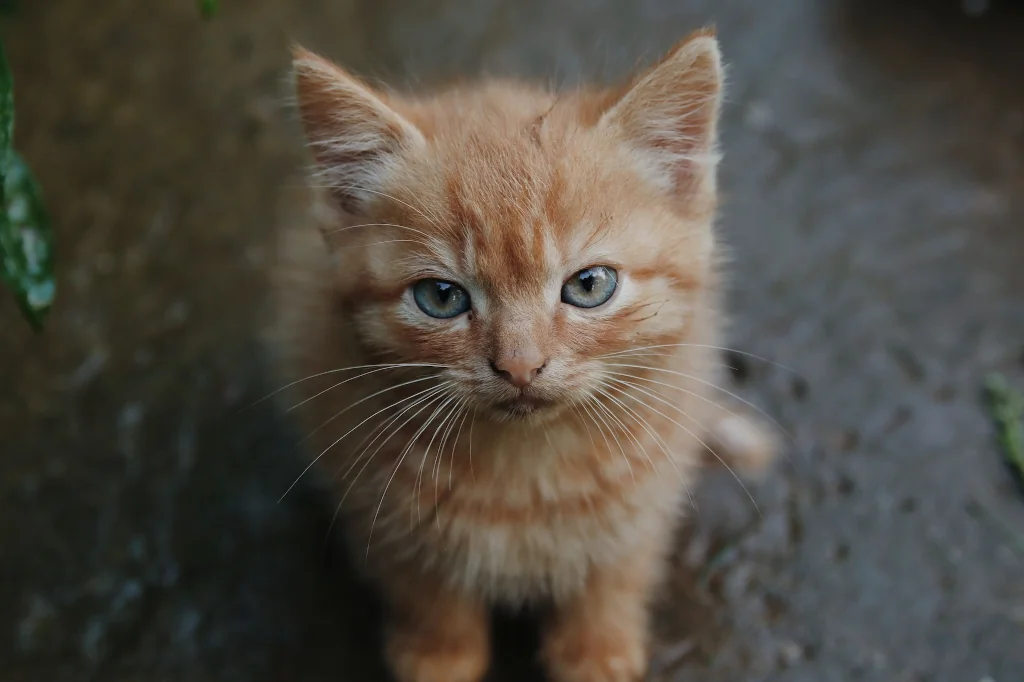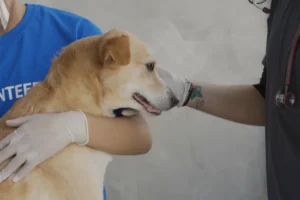We all love our little feline friends, and their playful energy brightens our day. But a concern may have been nagging at you lately: can kittens get rabies?
As a devoted pet parent, your kitten’s health is paramount. By understanding how this virus works and the steps to prevent it, you can ensure your fluffy friend remains healthy and rabies-free.

How Do Kittens Get Rabies?
Rabies is primarily transmitted through bites from infected animals, that carry the virus in their saliva.
Although it’s unlikely, kittens can indeed contract rabies if they come into contact with a rabid animal, typically a wild one such as a raccoon, bat, skunk, or fox. Since kittens can’t get born with rabies, even if their mother is rabid, the only plausible scenario is catching rabies from their mother’s saliva.
The virus enters the body through the bite wound, travels to the brain via the nervous system, and then spreads to other organs, including the salivary glands.
As scary as this might sound, remember that it’s relatively rare for indoor cats to get rabies, particularly if they don’t have access to wildlife. However, although cases of rabies in domestic cats are rare, it’s still a serious concern.
Can a Kitten’s Bite Transmit Rabies?
Rabies is transmitted through the saliva of an infected animal into a fresh wound, such as a bite. For a kitten that doesn’t have rabies, there’s no risk of transmission, as the virus must be present for it to be transmitted.
If a kitten has rabies and bites a person or another animal, it can indeed transmit the disease. Rabies is present in the saliva of infected animals and can be transferred through a bite that breaks the skin.
However, before you panic, remember that the occurrence of rabies in pets, including kittens, has significantly decreased in many regions thanks to successful public health efforts, including mandatory vaccination laws and efficient stray animal control.
Although any mammal can be infected with rabies, wildlife such as bats, raccoons, skunks, and foxes account for most reported cases.
Always ensure your kitten’s rabies vaccination is up to date to effectively prevent the disease.
Suggested read: Cat Vaccination Essentials
How Can I Tell If My Kitten Has Rabies?
Recognizing the signs of rabies in kittens can be challenging, as symptoms may not show up immediately due to the incubation period of the virus, which can range from weeks to months.
However, when symptoms do appear, they may include changes in behavior, difficulty swallowing, excessive drooling, aggression, paralysis, and seizures.
Initially, your kitten might seem unusually quiet, hide more often, or lose appetite. The kitten could also show signs of anxiety or nervousness.
These are typically followed by a ‘furious’ stage, characterized by erratic behavior, restlessness, and potential aggression. During this stage, kittens can also suffer from seizures and may seem disoriented.
Later, the ‘paralytic’ stage sets in, with symptoms like drooling, difficulty swallowing, and eventual paralysis. Your kitten may begin to drool and have difficulty swallowing due to paralysis setting in the throat muscles, which could further lead to respiratory failure.
It’s crucial to note that rabies is a progressive disease, and the symptoms intensify as the disease advances. Moreover, these symptoms can indicate other illnesses as well, so a veterinary consultation is essential to determine the cause of these behaviors.

How Likely Is It for a Kitten to Catch Rabies?
According to the Centers for Disease Control and Prevention (CDC), each year, about 250 cases of rabies in cats are reported each year in the United States.
While exact probabilities can be hard to define given the various factors at play, it’s important to note that your kitten’s risk of contracting rabies is very low, especially if they are indoor pets and have received the proper vaccinations.
Areas with a higher population of wild animals such as raccoons, skunks, and bats, which are common carriers of the disease, might present a slightly increased risk.
Even though only a small percentage of domestic cats catch rabies, any exposure to wild animals increases the risk, so preventive measures should be taken.
Steps to Protect Your Kitten from Rabies
Prevention is undoubtedly the best approach when it comes to rabies. Here are some steps to protect your kitten:
- Vaccination. Rabies vaccines for kittens are typically administered when they are 12 to 16 weeks old, followed by booster shots as recommended by your vet. Ensure your kitten gets vaccinated on schedule.
- Indoor Safety: Keeping your kitten indoors reduces the risk of exposure to rabid animals. Unless supervised or leashed, outdoor cats are at higher risk of contracting various diseases, and their lifespan is typically much shorter than indoor cats.
- Spaying/Neutering: Unaltered cats are more likely to roam and fight, increasing their chances of encountering a rabid animal. Spaying and neutering is not only recommended, but it brings many benefits for both you and your cat.
- Report Strays: If there are stray cats or wild animals in your neighborhood, report them to local animal control. Don’t just feed them, because that only worsens the problem of strays.
- Veterinary Care: Regular veterinary check-ups can help identify any health issues, including rabies, at an early stage. Check-ups can prevent many types of illnesses and significantly increase your cat’s overall health and improve their wellbeing.
Remember, rabies is preventable. By taking these proactive steps, you can help keep your kitten safe and healthy.
Here’s a quick visual comparison of indoor and outdoor kittens in terms of rabies risk factors, along with preventative measures for each:
| Indoor Kittens | Outdoor Kittens | |
|---|---|---|
| Rabies Risk Factors | Lower risk due to less exposure to wild animals | Higher risk due to potential exposure to wild animals |
| Preventative Measures | Ensure regular vaccination, secure the home against potential entry of wild animals | Ensure regular vaccination, avoid unsupervised roaming, consider leash training for safer outdoor experiences |
How to Handle a Possible Rabies Exposure
If your kitten has been bitten or scratched by an unknown animal, or if it’s behaving unusually following such an encounter, it’s critical to seek veterinary assistance right away.
Don’t try to handle or confine the animal yourself; instead, call animal control if the offending animal is still present. Rabies is a serious public health issue, and your local health department should be notified.
If it’s safe, try to confine your kitten without direct contact, using gloves and a thick blanket to avoid any possible transmission.
Remember, rabies is fatal once symptoms appear, so swift action is crucial for your kitten’s survival and for the health and safety of all others involved.
To ensure your adorable furball stays healthy and rabies-free, don’t forget to keep their vaccinations up to date. Want to make a vet appointment for your kitten’s rabies shot? Don’t wait! Click here to schedule an appointment with a trusted veterinarian in your area today.
FAQs
What age can kittens get vaccinated for rabies?
Kittens can typically receive their first rabies vaccination when they are around 12 to 16 weeks old, but this can vary based on local regulations and veterinary recommendations.
Are indoor kittens at risk for rabies?
While the risk is significantly lower for indoor kittens, it is not entirely eliminated. Rabid animals, such as bats or rodents, can occasionally enter homes, posing a potential risk. Regular vaccination is the best preventive measure.
What is the rabies incubation period in cats?
The average incubation period for rabies in cats is typically two months, but can vary significantly, ranging from a few weeks to several months, or even years in rare cases.
Is it safe to play with a stray kitten?
While the sight of a stray kitten can stir emotions, you should exercise caution. Stray kittens may not have been vaccinated and could potentially carry diseases, including rabies. If you encounter a stray kitten, consider contacting local animal welfare or rescue organizations for guidance.
Alex, a passionate animal lover, has experience in training and understanding animal behavior. As a proud pet parent to two dogs and three cats, he founded AnimalReport.net to share insights from animal experts and expand his knowledge of the animal kingdom.




